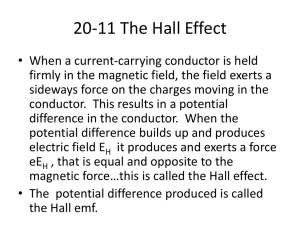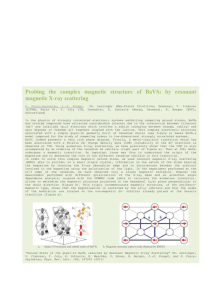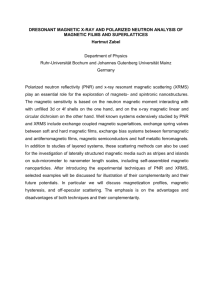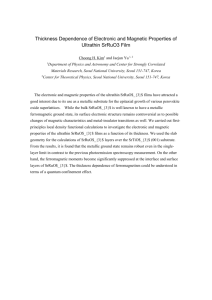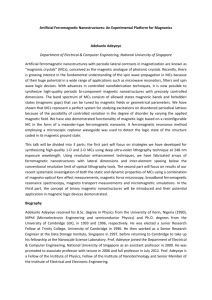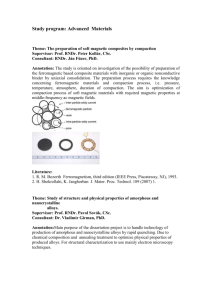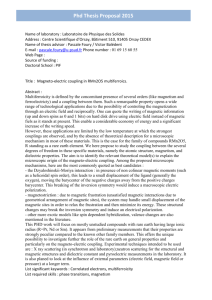Hakuto Suzuki - The 3rd Super-PIRE REIMEI Workshop on Frontiers
advertisement
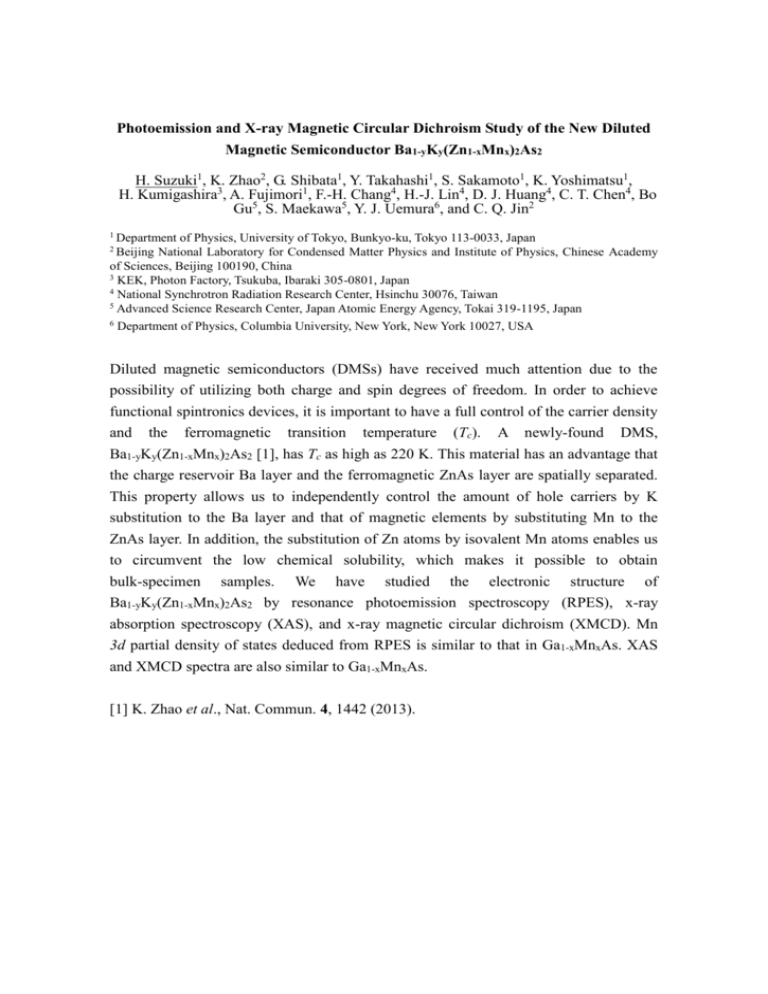
Photoemission and X-ray Magnetic Circular Dichroism Study of the New Diluted Magnetic Semiconductor Ba1-yKy(Zn1-xMnx)2As2 H. Suzuki1, K. Zhao2, G. Shibata1, Y. Takahashi1, S. Sakamoto1, K. Yoshimatsu1, H. Kumigashira3, A. Fujimori1, F.-H. Chang4, H.-J. Lin4, D. J. Huang4, C. T. Chen4, Bo Gu5, S. Maekawa5, Y. J. Uemura6, and C. Q. Jin2 1 Department of Physics, University of Tokyo, Bunkyo-ku, Tokyo 113-0033, Japan Beijing National Laboratory for Condensed Matter Physics and Institute of Physics, Chinese Academy of Sciences, Beijing 100190, China 3 KEK, Photon Factory, Tsukuba, Ibaraki 305-0801, Japan 4 National Synchrotron Radiation Research Center, Hsinchu 30076, Taiwan 5 Advanced Science Research Center, Japan Atomic Energy Agency, Tokai 319-1195, Japan 6 Department of Physics, Columbia University, New York, New York 10027, USA 2 Diluted magnetic semiconductors (DMSs) have received much attention due to the possibility of utilizing both charge and spin degrees of freedom. In order to achieve functional spintronics devices, it is important to have a full control of the carrier density and the ferromagnetic transition temperature (Tc). A newly-found DMS, Ba1-yKy(Zn1-xMnx)2As2 [1], has Tc as high as 220 K. This material has an advantage that the charge reservoir Ba layer and the ferromagnetic ZnAs layer are spatially separated. This property allows us to independently control the amount of hole carriers by K substitution to the Ba layer and that of magnetic elements by substituting Mn to the ZnAs layer. In addition, the substitution of Zn atoms by isovalent Mn atoms enables us to circumvent the low chemical solubility, which makes it possible to obtain bulk-specimen samples. We have studied the electronic structure of Ba1-yKy(Zn1-xMnx)2As2 by resonance photoemission spectroscopy (RPES), x-ray absorption spectroscopy (XAS), and x-ray magnetic circular dichroism (XMCD). Mn 3d partial density of states deduced from RPES is similar to that in Ga1-xMnxAs. XAS and XMCD spectra are also similar to Ga1-xMnxAs. [1] K. Zhao et al., Nat. Commun. 4, 1442 (2013).

